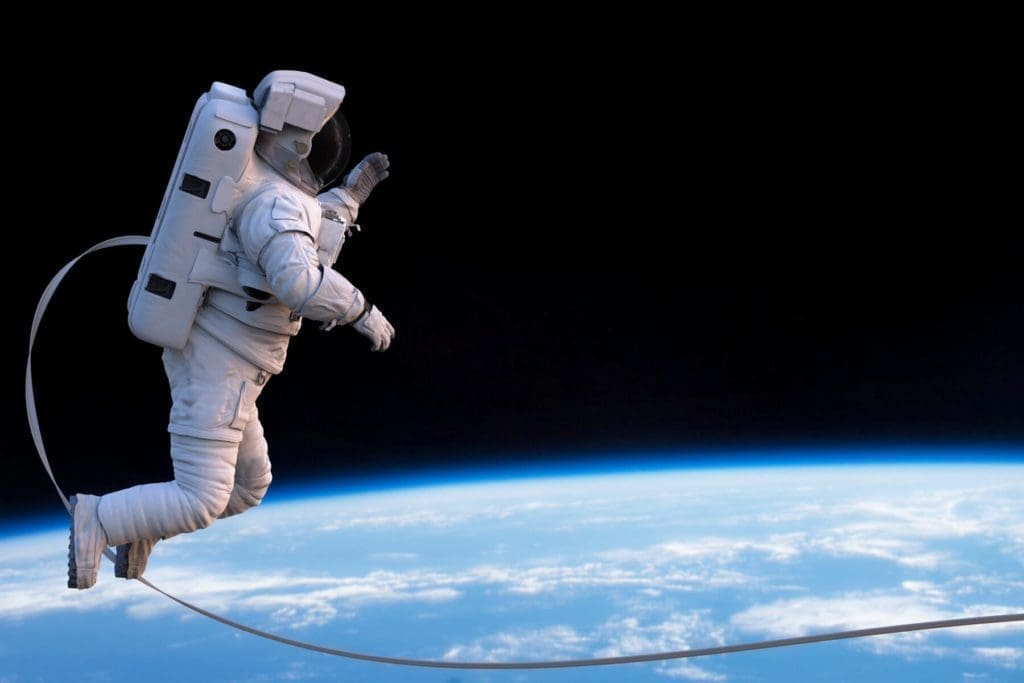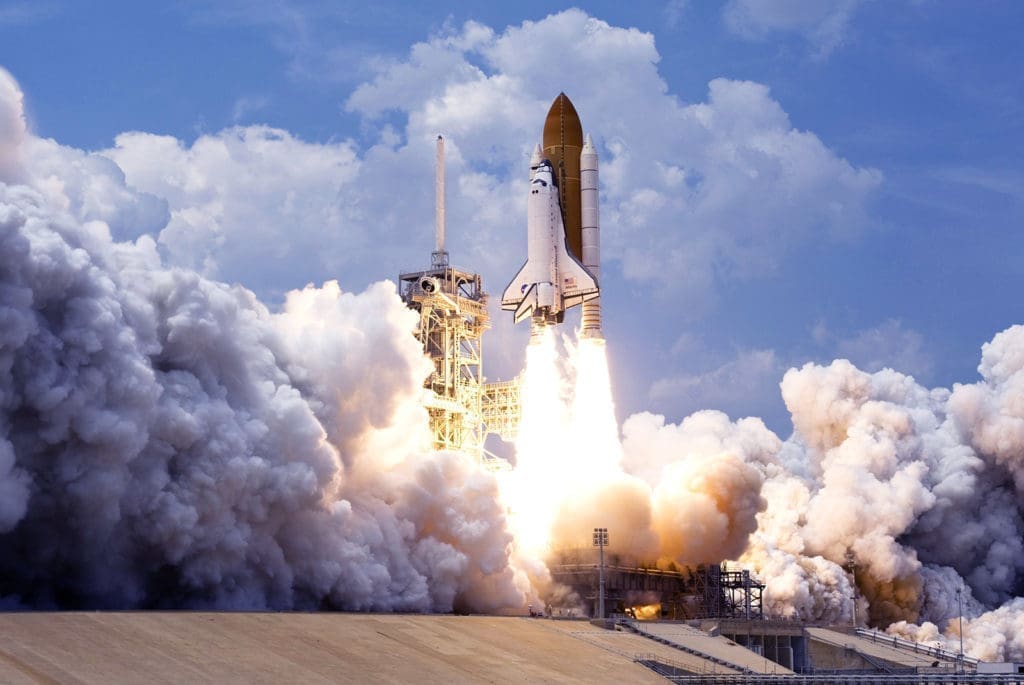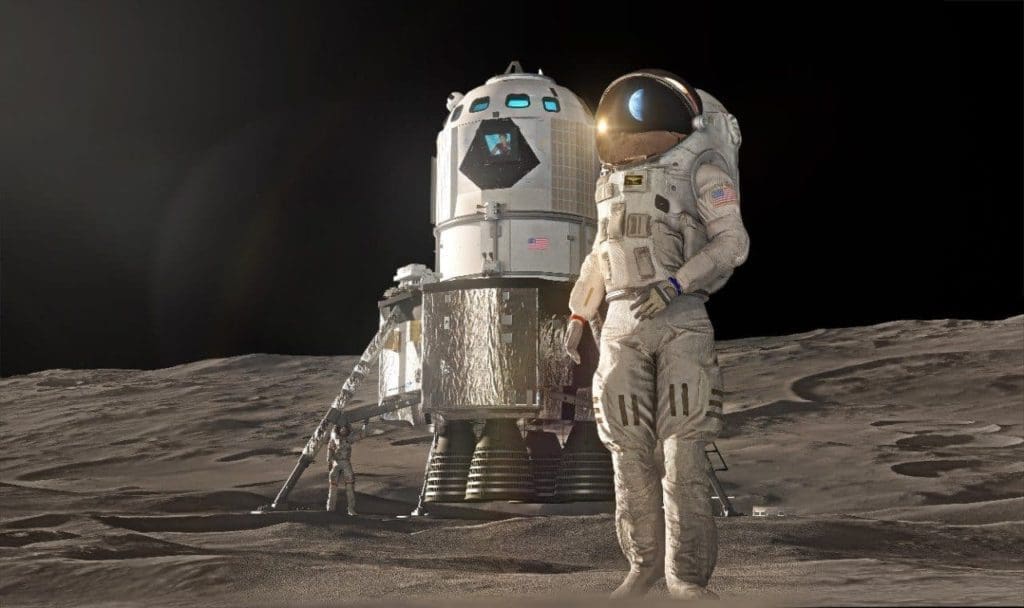Given the enormous crises of 2020, wouldn’t it be reveling to just hop into a gigantic spaceship and zoom off of this troubled planet? While there’s no failsafe volunteer for the new Earth, and our technology, presumably still decades behind, if not centuries, proposals and budgets for space explorations are still in the pipes.
Interstellar travel is the use of crewed and uncrewed space shuttles, to investigate the ends of the universe beyond Earth’s atmosphere, and the use of such knowledge gained of the cosmos, for the good of humanity.
Ever since the first crew led by Russian Yuri Gagarin landed in space in April 1961, there have been up to 300 space flights and NASA (National Aeronautics & Space Agency) alone, has successfully launched over 200 crewed flights, though two (Challenger 1986, and Columbia 2003 disasters) ended in failure, causing the death of entire crew members.
How possible is space travel?
Interstellar travel is a fantasy of every kid, made more appealing by science fiction series, books, space travel songs like the 1969 ‘Space Oddity” by David Bowie; John William’s “Star Wars” symphony; the 2001 Grammy award “Drops of Jupiter” by Train; and movies such as Holste’s “The Planets”; Levitate, and it’s theme song by Imagine Dragons.
The truth remains that interstellar exploration is technically possible. The natural laws of physics outrightly validate it, but it isn’t as easy as it seems. We may not in fact achieve it in this lifetime nor century.
The Voyage Outward
So far, there have been interstellar space probes already in operation, except the challenge is, these voyagers are going really fast to nowhere. Each of these flightless space explorers travels at tens of thousands of miles per hour, which is pretty fast, but they’re headed in the direction of no specific star, given that their mission is just to explore different planetary bodies of the solar system.

Whereas, if any of these space shuttles was heading the direction of a definite star, let’s say Proxima Centauri – Earth’s nearest neighboring plexus- which is barely four light-years off – they would arrive it in roughly 80,000 years and would require to start out with a crew of 98 members, judging by the current tech.
Private spacecraft & Cost of interstellar travels
NASA has a Commercial Crew Programme that partners with private companies such as Boeing and Elon Musk’s SpaceX to build a space shuttle that can commute humans into space orbit. Once completed, the two firms will control the craft, while NASA astronauts will be left with commuting passengers to space at a fraction of a fee.
Some Private firms such as Virgin Galactic are conducting reservations for suborbital flights at $200,000 per person. Virgin hopes to charge an astronomical £250,000 for its commercial space flights, while Barcelona’s Zero 2 Infinity, aims to lessen the cost of space travel by inventing a space balloon “Bloon”.
Before we dive into the bizzarre implications of space travels, let’s swipe through some of its importance;
- We love to explore; Humans are wired to explore and push through the boundaries of the unknown. This is seen in our renewed interest to evolve space tourism and visit Mars through SpaceX and NASA’s Artemis Projects.
- New Technologies and Research; Efforts by humans to explore outer space have led to the invention of diverse techs that have in turn improved life on earth with inventions like GPS, solar cells, ultraviolet filters in sunglasses, etc.
- Asteroids & Comets aren’t friendly visitors; These massive entities floating around space could just get up close and smack into Earth’s core, the effect would be disastrous. A vigorous space program may be Earth’s only hope of deflecting these objects.
- For Colonization: It’s never too early to plan. With Earth’s population hitting a high of 7 billion inhabitants, humans are being crammed up in one planet. Colonizing other planetary bodies would help sustain the race if in case, earth wears out of sustaining human life. Imagine future humans being Martians that have never touched the earth.
- World Sustenance through Space Mining; Research shows that spatial objects like asteroids contain veritable resources that can be honed. As the earth continues to lose the valuable amount of resources needed for its sustenance, it may be more beneficial to divert to space mining for an unlimited supply of resources that are rare on earth.
The 7 Bizzare Implications are;
1. Space travel is bad for the body at a cellular level
As of 1957, UCSF scientists had initiated researches into the impact space has on humans, which are both physical and mental. U.S.S.R started a space race by launching Sputnik 1, which was the first man-made object to orbit space.
Studies show that in the zero-gravity of outer space, humans experience varying changes physiologically, ranging from muscle atrophy, bone loss, high risk of cardiac and kidney-related complexities, depletion of immunity, and motion sickness.
A number of reasons that cause these zero gravity changes. These include volume redistribution around the chest and head region, decreased use of the lower regions, and shortage of gravitational pulse on cells. There is a need to consider these unique changes in the human body.
2. The Ethics of Space Travel over Advancing Neuroimaging Technology compared to Solving World Hunger
This aspect of space travel can be discussed under futurology. It would be amazing for scientists to visualize the thoughts in our minds, and their relative neurons. For this to be achieved, neuroscience has to upgrade tremendously. Though there are implications to this, the potentials advantages include seeing our thoughts in action as they form.
While private firms and NGOs grapple for solutions to the twin issues of resource scarcity and food waste, NASA’s recent tech could provide a timely panacea.
Hyperspectral imaging is a tech optimized by NASA, to be the next step in managing world food chains. According to ImpactVision, a software company that uses this tech, large-scale food waste and shortage can be averted with this. Though this tech has been used for decades by space agencies, cost reduction has increased its application.

3. Linguistic Issues in Space Travels
The long interstellar journey is capable of creating an unintelligible language for people on Earth, according to a new study. Space voyagers could be at risk of understanding earth language, especially for generational ships.
This study fascinates us with the discovery that space journeys could last for many generations, which is likely to cause mutations in spoken language, for both space travelers and earth-dwellers.
Presumably, there could be a rise to what the study terms “up_talk” where speakers would commonly end statements with a rise in intonation. This can be misunderstood for questioning tones by non-partisan speakers. The term has spread among young Americans, Australians, and English in the last forty years.
The authors also presume that earth language might as well change by then, with inhabitants communicating in the version of a new language nobody is currently using. Sign language would also be on the rise by crew members’ genetics foretells would be born deaf.
Research by Andrew McKenzie and Jeffrey Penske, linguistics professors from Kansas University and Southern Illinois University respectively, reveals that when communities become isolated from others for so long, the space colonizers wouldn’t be able to comprehend their original language. Also, given the dwindling causes to communication, and distance, both parties might just be unable to talk to each other as time elapses.
A way of averting these potential language pitfalls is providing schemes to remember Earth’s language and having designated crew member(s) trained in linguistics.
The professors also propose that modalities should be provided to have ‘linguistic immigrants’ to far-flung space colonies trained on languages, to save them from discrimination.
4. Natural Ageing
Given the health implications mention in point one above, interstellar travels have dramatic consequences on the body, causing space sojourners to age faster than their earth counterparts.
These similarities of space flights resemble ageing older. It gives opportunities and concerns for astronauts to undergo researches on human aging processes, for long-term space missions.
Though some space travel effects aren’t exactly the same as aging, many of the changes that happen in outer space reverse themselves when these travelers return to Earth.
Scientists make use of these comparisons, to determine adverse aging processes, by time spent in space. Interestingly, most of these known side-effects such as reduced blood level, heart and lungs issues are sure to balance out with time.
5. Colonizing Mars may require human 🧬 DNA Twist
Genetic engineering may be instrumental to humanity’s future on Mars. For us to get to that point of settling on the red planet, we may have to be made a bit less human.
NASA intends to begin crewed missions to Mars in the 2030s, a fit that will be detrimental to astronauts, with exposure to ultra radiations, bone atrophying microgravity, and many other hazards for numerous years per time. The sponsors assert that these colonizers would still stand the chance of making it back to earth in good shape.
This might be quite different for those with intentions to permanently live on Mars. To attain a state of healthy and safe habitation beyond our home planet, humans may be required to tweak their genetic compositions a bit more, according to experts.

Sci-fi movies and novels on space may soon play out in reality as genetic advancements are gaining more ground day by day. For instance, scientists are on edge of introducing genes from tardigrades into human cells in labs. These animals can weather the vacuum and harshness of space, with the doctored cells exhibiting higher radiation resistance than normal cells.
NASA and other space agencies have adopted space shielding measures to protect their astronauts physically and pharmacologically by various medicines, as they work towards more genetical security, ensuring that these measures are safe.
Harnessing the genes from tardigrades might also someday pave a way for astronauts to travel beyond Mars, even to a more exotic and threatening cosmic entity. For example, a crewed expedition to Jupiter’s moon Europa, known to harbor a vast ocean under its icy layer, is a fit none dares to mention at the moment. Aside from being extremely cold, Europa seats in the center of Jupiter’s most radioactive zones.
If humans ever get to that point, the human body would be almost completely fried up by vast amounts of radiation. There, it would be cases of instantaneous death unless something is done drastically, including all possible kinds of shielding ever provided, experts say.
6. No to Space Capitalism. Yes to Space Exploration.
As much as humans hope to sustain life on Mars, we don’t intend to be subservient to early colonizers and capitalists such as Elon Musk and Jeff Bezos who, with a space vision that serves a narrow capitalists’ interest, can turn us into lesser beings on a Martian civilization. We intend to build solar explorations that are beneficial to all.
Elon Musk is SpaceX founder and Tesla CEO, who partnered with Donald Trump to launch SpaceX astronauts into space on May 30th, 2020, at Kennedy Space Centre, Florida.
Trump, after canvassing for the militarization of space by creating the US Space Force, merged his own ideals with that of the SpaceX boss, asserting that humans will soon land on Mars with the greatest tools history has ever known.

These two power tusslers, coupled with the May 30th launch, portray a renewed American strength, and their desire to not only bolster their source of wealth but set the pace for a privatized space company.
These space investors, together with the CEO of Amazon, Jeff Bezos, have little interest in the welfare of the populace, with their space ideals engineered for only influential folks like themselves. They care less about fitting in the working class, which is a pointer that they’ve built their wealth on exploitation.
The Future They envisage
Bezos and Musk are key influencers of modern interest for the privatization, colonization of space via their respective booming industries, Blue Origin and SpaceX. The two have varying ideals, as Bezos intends to build space colonies while Musk prefers to colonize Mars.
While Bezos asserts earth is the best planet in the solar system that could be made worse if quick measures in space colonization are not undertaken, Musk envisioned in 2016 about landing rockets on Mars by 2018, a vision that never birthed out but nonetheless changed this obsession. Musk is bent on transforming humans into multi-planetary beings, striving to have us choose a side between space colonization or risk extinction.
The space billionaires have disclosed their stakes, with Musk giving several figures of ticket fees to a possible self-sustaining Martian civilization at $500,000 to $1 million per ticket.
He, however, prescribes loans for colony workers who wouldn’t be able to afford ticket fees, to be paid off later as he envisions there’ll be more jobs on Mars.
Bezos on the other hand, seems more liberal on how to expand this vision, though unwilling to disclose the types of jobs they’ve envisaged for people on Mars.
With plans to sustain economic growth and dynamism, which would need the world population to triple over, they envision space colonies capable of inhabiting a million people each, while earth would mainly be a tourist-based planet. They further envision industrial works to be shifted into space orbit, to avert polluting the planet. It is presumed that’s where much of this triple population would have to irk out their living and that of their descendants on space, working for these space landlords.
Space Shouldn’t Serve Capitalists Goals
Murray Bookchin in 1978 pictured a futuristic goal that would extend the present into the future, and turn multinational corporations into multi-cosmic corporations. Much of this was based on probable tech changes but aimed at preserving existing socio-economic ties. It is believed this is the core of the “space billionaires'” future ideals.
Capitalism was believed to have ended long ago, but just as past capitalist expansion rode on the detriments of impoverished working-class citizens to enrich a few elites, so will space be used for exploitation. The space billionaires may have a public miff, such as Trump and Bezos, but they’re always willing to unite where common interest in space exploration comes to play, which will possibly push public funds into their private wallets.
This doesn’t aim at discouraging space exploration as the collective interests of humanity lie in gaining more knowledge on spatial entities and the solar system. But this must be driven by scientific means of enhancing nationalism and humanity’s well-being, not done as part of a new colonial project for profit maximization.
7. Cryptocurrency: changes to space exploration
Cryptocurrency is strengthened by space exploration; The emergence of cryptocurrencies has greatly influenced commercial outer world space travels. It may seem an improbable course but when considered intently, it is seen that satellite communications and private modules all curve towards the ideological and applicable essence of cryptocurrency.
Beginning with Blockstream’s satellite API for Bitcoin, this is a non-stop broadcast of the most current state of bitcoin blockchain from space. It is useful for several purposes, giving another layer of communication as backups. It’s equipped with six satellites currently, it covers most of the planet.
Bitcoin has a peer-to-peer strong network of distribution but still lags behind on independencies. If nodes can connect to the Internet, it will enhance one-to-many communication till a consensus is reached. There might arise attacks that seclude one node from the consensus whole, (an instance known as Eclipse attack) though expensive, it would be lesser when impacting the entire chain. This could ensure a backup broadcast that’ll mitigate singular-level attacks.

Securing backups for whole networks is a step to fortify the blockchain. World governments have displayed capabilities in censoring the Internet holistically due to unsavory contents. By cordoning off dependency on the Internet, satellite beaming may aid in saving bitcoin from future calculated state attacks. It will as well ensure nonstop uptime for all peers even if a state chooses to play down on the Internet within its geography.
Cryptocurrency on space travels may also be a way to make people with no access to the Internet be able to utilize the data required to up-play them onto Bitcoin if the cost of satellite launches reduces, and spatial orbit communication improves.
As of 2016, more than half of the world’s population was lacking in internet connectivity, according to World Economic Forum. For cryptocurrency and Bitcoin to spread out considerably, there has to be in place more internet coverage, or other ways of broadcasting consensus data that blockchains feed on.
The costs involved in moving enormous amounts of heavy goods across the vastness of space are simply too high, thus, just as when genome sequencing was birthed, and the Internet itself, this will lessen with time as more studies are ongoing on the subject matter.
Cryptocurrency will not just aid fund interstellar exploration, it will help in eliminating physical barriers on value store represented by gold and other metals. With the right government footings, space exploration would challenge humans to reach their highest potentials.
Given the continued and increasing viability of space explorations for individuals, and the lessening cost that avail same opportunities to companies to undertake such expeditions – which were hitherto monopolized by governments- the focus is placed on the decentralized state of cryptocurrency, together with its financial value. The increased sophistication of space explorations will help make cryptocurrencies an alternative value system capable of passing the test of time.
Conclusion
NASA hopes to bring to the fore, the 21st-century space race, which could possibly lead to a 10-minute space expedient, orbiting interstellar hotels, and Martian humans, with SpaceX already breaking grounds by launching humans to the Int’l Space Station (ISS).
If space travel really does become more accessible and affordable, it’ll be probable for private citizens to regularly pay visits to outer space and gape at the blue, watery earth, maybe through space stations, space capsules, or inflatable habitation building intended Bigelow Aerospace.

